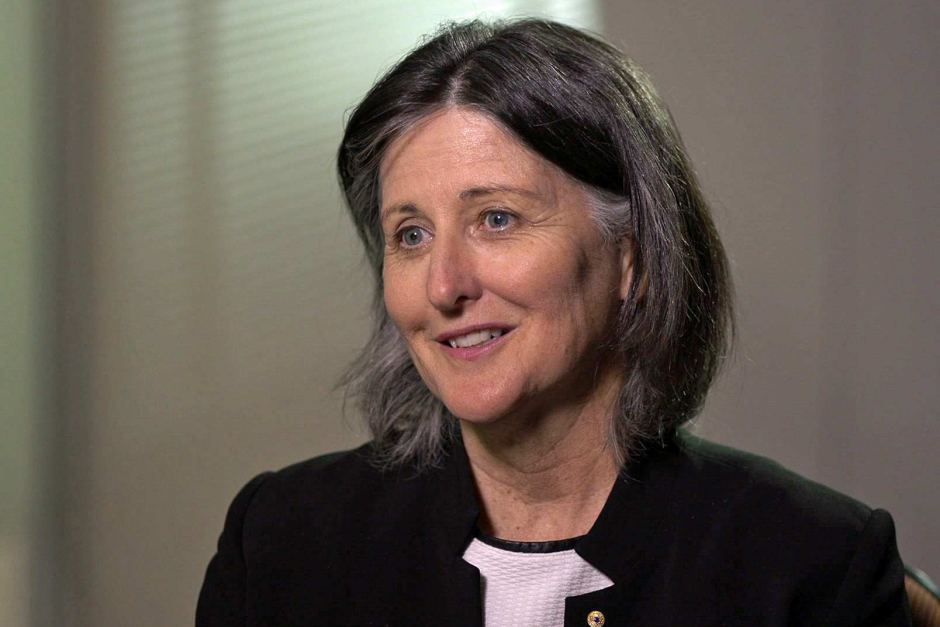It’s a short-odds bet that in 2021, the regulatory noose will tighten around the buy now, pay later sector. These businesses are just moving too darn fast.
On Monday Afterpay will be officially welcomed into the top 20 listed companies in Australia, now worth over $30bn. Afterpay pays no dividends and has yet to make a profit, but an investor who hitched their wagon to Afterpay shares at
the low in March has seen them rise over 1000 per cent.
Through Christmas and the January sales, Aussies will spend up, more and more of them using the services of an Afterpay, a Zip, Latitude or a Klarna rather than traditional credit cards.
Buy now, pay later is lay-by without the wait. Buyers take the goods upfront and then pay off the debt, typically over about eight weeks in four payments. It is billed as a win-win for customers and merchants. But is that right?
Regulators are looking care- fully at the one in five customers that can’t seem to cope but there are also many small businesses re- covering from shutdowns paying hefty fees to BNPL to help boost their sales.
Most buy now, pay later business models depend not on consumer late fees, but on merchants: small businesses.
Small Business Ombudsman Kate Carnell says the fees that BNPL charges put credit cards in the shade. “From a small business
perspective, a merchant perspective, they’re paying the cost of this. “With a credit card, a merchant will pay maybe 1.2 per cent; it varies depending on the size of the merchant.
“With BNPL products you’re talking about 5 per cent, 6 per cent, even 7 per cent.”
Unlike credit cards, merchants are prevented from passing on any of the fees to the consumer in higher prices.
“The contract between the small merchant and the BNPL company precludes them from charging an extra amount of money, a surcharge,” Carnell says.
“Sometimes when you give a credit card, they will say there’s a credit card surcharge, 1.2 per cent, 1.3 per cent. The BNPL people pre- clude merchants from doing that, so they have to wear the whole cost.”
The regulator for payment systems is the Reserve Bank. Earlier this month, governor Philip Lowe ruled that BNPL can continue to prevent small businesses adding a surcharge, at least for now.
A report by BigCommerce puts BNPL’s share of transactions at 14 per cent.
“We are of the view that regulation is not required,” says Zip chief Peter Gray.
“There is no consumer or re- tailer harm. Any commercial arrangements that we have with our retailers should be subject to our contractual arrangements.”
It’s a debate that the BNPL industry is winning at the moment, agrees Financial Counseling Australia chief Fiona Guthrie. “Whether they’ll win in the long term remains to be seen,” she says.
“Phillip Lowe says that BNPL is still a very small proportion of the payment market and he is right about that. But it is also worth going back to the royal commission, which we should not forget was only a year or so ago.
“One of the things commissioner Hayne said was ‘don’t create loopholes in the law’. And that is what we are doing. We have a different system for BNPL com- pared to other payment mechanisms and we are distorting the market.”
The dilemma for small businesses is, can they really afford to sit this one out? Buy now, pay later argues that retailers should see the fees not as a finance cost but as marketing to drive new sales. After all, Facebook would be charging them 10 per cent on cost of sales.
The jury is still out on BNPL, says the man who runs small business peak lobby group COSBOA, Peter Strong.
“Anything new with all the hype always worries me. There is no guarantee that businesses pick up more customers as a result. In the past we have seen the same thing with Groupon, which in the end proved to be not great for small business.” (Groupon offers discounts for customers using virtual coupons.)
“Their sales staff were just exceptional,” Strong recalls, “but the whole thing was a rip-off. We had small businesses going bankrupt because there was no limit on the number of discount offers to customers.”
ASIC has found that buy now, pay later earned almost $400m from businesses in 2018-19 but the regulator’s November report largely overlooks the merchants, focusing more on customers and services offered. Strong has launched a survey of what he calls the “missing middle”, asking small
businesses for feedback. He ad- mits early responses are positive on BNPL but he remains cautious.
Kate Carnell agrees. “I think this is the really big worry. Re- member this is an unregulated area and these are products that are really expensive for small busi- ness. Less use of credit card, more use of BNPL — all of a sudden, when small business thought it was just for those extra sales and really nice to have, they are going to start finding that it is part of their core business. And they are going to be paying 5 per cent, 6 per cent, 7 per cent for the pleasure andnotbeabletopassitontothe consumer at any level at all. We are going to see some very real problems.”
Carnell wants to see regulators look at BNPL from a competition perspective. “What is this actually going to mean in the marketplace? Is this literally just a movement of cost to small businesses? I have to say these things have been set up in a way that is going to test regula- tors in what they can actually do about this generally.”
Earlier this month, two buy now, pay later firms turned on each other in spectacular fashion. Sweden-based Klarna, hungry to build market share in Australia, at- tacked Afterpay’s merchant fees as extortionate and called on the RBA to cap fees. Afterpay’s An- thony Eisen fired back, labelling the comments comical and accusing Klarna of camouflaging its own fees.
The spat underlines the complexity of the BNPL business mod- els that regulators must understand. Buy now, pay later operates outside the Credit Act’s responsible lending laws and each player tends to pitch their strongest suit against intervention in favour of an industry-run code. Afterpay argues it is responsible, that BNPL is a great cash management tool for its 10 million plus customers and the proof is in the results.
“The average transaction value with Afterpay is $150, the average balance outstanding is no more than $200,” said chief executive
Anthony Eisen after his August results.
“From a consumer responsibility perspective, our default rates are lower over this period. That’s a reflection of the dynamic nature of our system and the core disciplines that are already included in our product.”
Zip transactions can be up to $50,000 but that includes a mix of credit products, some of which are regulated, and it boasts higher scrutiny of its customers than other BNPLs. Chief executive Peter Gray says his customer arrears and hardship are lower than before COVID-19. “With regard to ASIC and responsible lending, Zip has conducted ID and credit cheques since day one. We are delivering significantly better out- comes than traditional credit products such as credit cards, so we don’t necessarily see consumer harms requiring legislation or regulation at this stage.”
What worries consumer advocates like Kate Carnell is that BNPL as a sector is reaching far beyond payments for tops and sandals in the local mall where the cap is usually set at $1500. And the debt that customers can rack up is rising fast. “Things like cosmetic surgery, which concerns me because it does encourage possibly younger people to buy products that may be a real struggle for them to pay. They are moving into solar panels for roofs.”
Fiona Guthrie agrees. “There is a company selling BNPL to get into the investment property mar- ket, which is fractional investing and quite a complex product. You can get buy now, pay later for between zero and $30,000 and who knows where that upper limit might end, because there’s a loophole in the law and financial companies are essentially driving a truck through it.”
Both Carnell and Guthrie give credit to Afterpay and Zip for at least engaging with them on their concerns. In the end, it may not be these household names that cause regulators to act, but the actions of smaller, more adventurous operators that rain on their parade.
This Article was republished from The Australian. Click here for the Original Post



